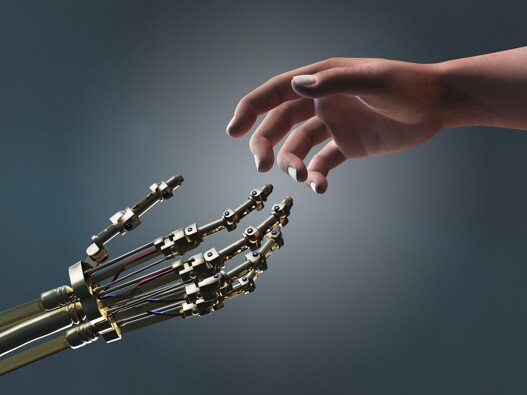
4 digital HR trends shaping the workforce
Workers expect personalized communications from HR, covering everything from the job application process to day-to-day interactions on the job, which is made easier by automation and artificial intelligence.
The desire for more streamlined hiring processes and retention efforts has companies, especially HR departments, scrambling to incorporate digital tools without a true sense of the business objectives these tools help to solve.
“We always have to remember that technology is an enabler,” says Emily He, senior vice president of HCM cloud business group at Oracle. “No department should be implementing technology for the sake of technology.”
Here are four digital HR trends, according to Oracle, that will shape the workforce.

1. Workforce automation and agility becomes a priority
“HR must also focus on workforce agility — using AI and contextual data to short-circuit problems like [attrition] and turnover, better understand the workforce and talent pool, and fuel smarter hiring,” according to Oracle.
The chatbot automates a lot of manual tasks that HR typically handles, clearing time for other pressing matters, He says.
If HR executives are unsure how to use a chatbot, He suggests looking beyond enterprise technologies to consumer-facing websites and tools.
“When HR professionals are thinking through chatbots, they can definitely learn some lessons by going online and interfacing with a chatbot, especially on shopping sites,” she says.

2. HR functions become more personal
— particularly millennials and Gen Z — are looking for technology that can help answer questions about benefits.
“Organizations face a greater pressure to mirror the same technology experiences employees are accustomed to in the consumer world to create better connections and personal growth at work,” according to Oracle. “The rapid adoption of chatbots, conversational user interfaces, facial recognition, and other intelligent agents as tools will rapidly transform HR business processes such as benefits enrollment and recruiting.”
Although some vendors, including consumer-directed healthcare provider
“People and organizations want a simpler user experience. They are also overwhelmed,” He says. “They just want to ask Siri, ‘How many vacation days do I have?’ They’re relying more and more on conversational UI (user interface).”
HR departments should follow the lead of their vendors and ask for best practices in regard to creating personalized communications, leveraged by AI, for employees, He says.
Employers should engage workers by delivering a consumer-like experience that gets to an employee’s whole self, she says.
“[Young employees] want their work to have meaning, purpose and work-life interaction, [and they] want to connect with colleagues in the way they context with friends and family,” she says.
She suggests revamping such HR processes as benefits, help desk and recruiting to utilize AI-enabled tools.

3. AI for recruiting becomes a necessity
In fact, candidates applying to jobs at 20% of large global enterprises will interact with chatbots before recruiters by 2020, according to the Forrester 2018 Predictions Report.
Not only is AI used to gain deep insights into talent needs, to understand how to source candidates, and to identify the right candidates and their likelihood of success and longevity, but it also can look at the company’s high achievers and identify similar characteristics in job seekers, according to Oracle.
Companies are also using tools, created by vendors like Mercer and SAP, to
“These conversations have been going on for a long time; now they’re just happening in the open,” He says. “The core objective is to promote diversity and inclusion. We can use AI to reduce unconscious bias during resume screening.”

4. Marketing and HR intertwine for recruitment
That’s why HR should work with the company’s marketing department to tell employee stories, delivered though AI-enabled technology, to reach job seekers.
“A merged marketing brand and employer brand delivers more authentic and differentiated brand promise,” according to Oracle. “It’s more important than ever for marketing and HR to more closely align their culture-building efforts and how they position themselves to potential customers and job candidates.”
The merging of two departments, even if it’s just for this specific task, allows employers to design the ideal employee experience, He says.
“Employees can provide a lot of input for what’s ideal for them,” she says. “It promotes that sense of culture and being valued.”
It also helps HR professionals evaluate the types of technology they need to maximize their productivity and efficiency.





